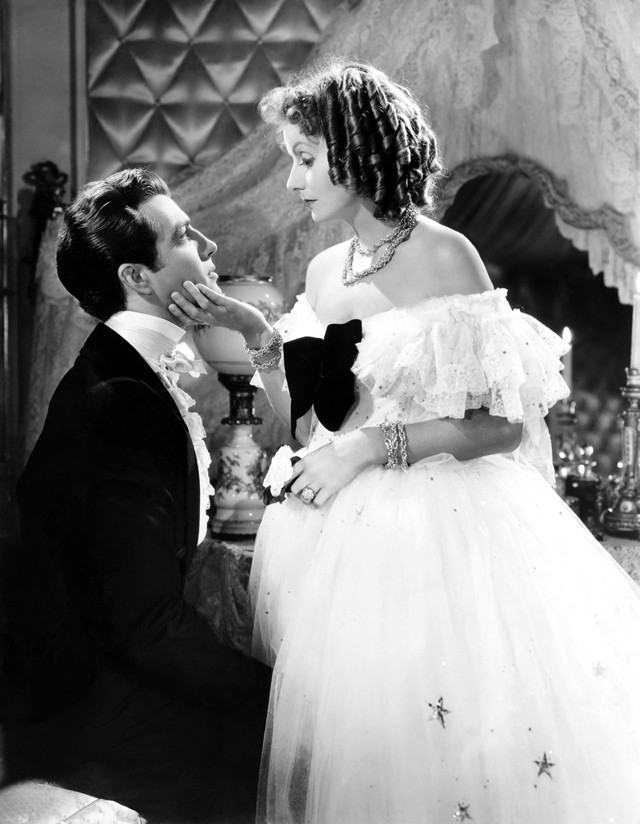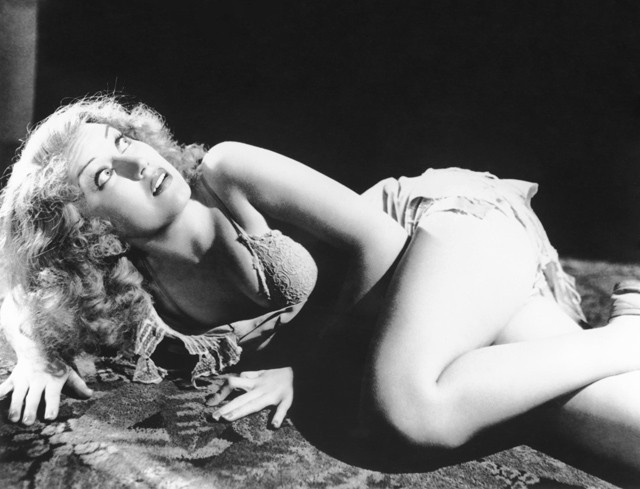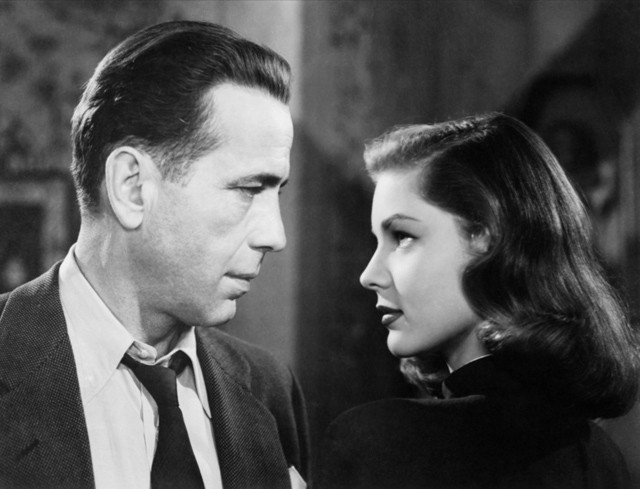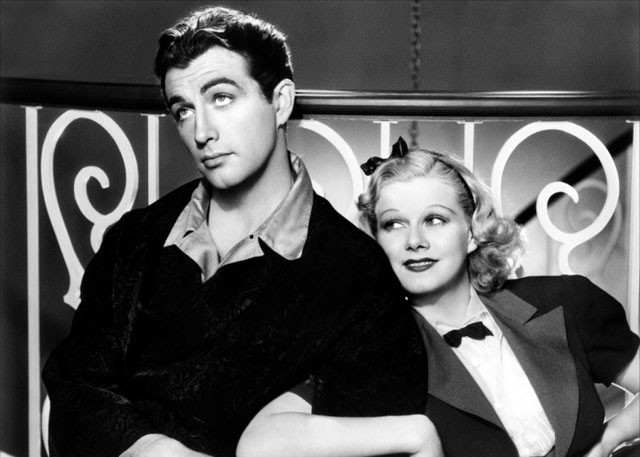Her Fortitude Is Godlike: A Tribute to Cecelia Ager
by Hazel Cills

I wouldn’t be a writer if I didn’t love clothes. As a teenager, I sought out fashion wherever I could: collections, editorials, movies. I poured over fashion magazines and blogged about what clothing meant to me until I started writing about fashion for websites as an actual job. But like many other women writers I know, I’ve tip-toed at the gate of certain realms of writing because I just couldn’t think I could do it. I only wrote about clothes; my voice wasn’t right; I was, well, a girl. The truth is, I don’t think I would have known I could write about anything until I saw a woman doing the same. And while writers such as Ellen Willis, Linda Nochlin, Pauline Kael opened doors for me as a writer, their careers would have been significantly different without the work of the late film critic Cecelia Ager.
A month or so ago I was reminded of Cecelia Ager. I was making notes for an essay on women in film and racking my brain for critics I liked; writers who searched with craned necks for multi-faceted women on screen. I thought about what it was like to be a teenager obsessed with fashion but possessing a wandering eye for writing about film and culture, writing that seemed just out of reach because of these invisible lines I thought were drawn between fashion and art.
Ager was a fashion writer who transcended her beat. Born Cecelia Mayer 113 years ago today, Mayer would go on to marry the songwriter Milton Ager of “I’m Nobody’s Baby” fame. She enjoyed a fairly significant freelance fashion writing career, chronicling what celebrities wore for publications like the New York Times and Harper’s Bazaar. But it wasn’t until 1933 that Ager landed her first real film criticism gig, after pressing publisher Sime Silverman at a party to include a woman’s voice in the pages of Variety. When I heard this story I thought about all the women I know today who falter when it comes to pitching, the writers who have trouble selling their voices in professional settings against established male writers. To know Ager was so ballsy, so aggressively hungry, in the year Nineteen Thirty-Fucking-Three makes me want to step up my game currently.
Silverman hired her to write specifically about clothing in films, a balance between the onscreen fashion and the movie itself. A movie reviewed only through its clothes is potentially limiting, with the focus off the writing and acting and on what are essentially props. Adding a woman’s voice to Variety’s film beat hinged on Ager’s experience writing about fashion only. Ager’s film writing in Variety not only bonded fashion and film comfortably in text, but brought a whip-smart voice to film writing. It was a voice that would later be found in the work of critics from Pauline Kael to Roger Ebert. Writers like Stephanie Zacharek, Farran Nehmn, and Manohla Dhargis in particular owe a lot to Ager’s writing, which was littered with asides, cheeky innuendo, and a voice that could only be described as one seriously appreciated eye-roll.
In her review of the swirling silk garments Kay Francis wears (during a ludicrous sandstorm) in 1937’s Another Dawn: “Errol Flynn and Ian Hunter are very sensitive and their natural British yen to stop bullets with their persons may very well be increased by an unconscious desire to be dead before the prophetic fashions Miss Francis wears become universal.” Although Francis’ costumes were laughable, Ager doesn’t crack her surprisingly dark jokes at Francis, but rather her clothing from the hands of costumer Orry-Kelly and the many men who created her character.

The sarcasm in her review of King Kong demands to be read aloud. “Despite all her experiences with picture beasties…[Fay Wray] is just as terrified at King Kong, she screams quite shrilly as if she couldn’t remember from her past encounters that she will surely be saved at the end,” Ager writes, “She won’t learn, Miss Wray, she won’t learn. All that’s come of her former run-ins with monsters is the overnight change of her hair from black to blonde, but it doesn’t help.”
Ager was a critic whose beat was examining how women fit into these pictures at large. Just as Ager was driven to bring a woman’s voice to the pages of film magazines, she was driven to better understand women’s voices on screen. With her aside as to how Fay Wray’s hair color change doesn’t help make her character any smarter, Ager seems to establish how frivolous it is to judge a character on account of her appearance while also revealing just how important women’s clothes were to the construction of their characters. “[Miss Stanwyck] looks very well during the time she spends at San Quentin [Prison]. Her hair is always waved and coiffed, her make-up never neglected, but she doesn’t appreciate it,” wrote Ager of Ladies They Talk About. “She just sulks and pouts and wants to get even all the time.” She used writing about a woman’s appearance as a mere gateway to critique how flimsy these roles were, how bad or good the acting was, all under a snarky sheen that defined Ager as a critic you actually wanted to go to the movies with.

Ager sliced up female representations on screen far before the likes of Laura Mulvey and Manohla Dhargis, before a school of film critics educated on the “Bechdel test” kept the critical wheels churning with every new major blockbuster cast listing released and Nolan film screened. “Except perhaps for the showgirls in a Metro musical, there has never been assembled for one movie a greater and more delightfully varied number of female knockouts,” Ager wrote of The Big Sleep. “But whereas Metro showgirls at least look content, every woman in The Big Sleep is feverishly hungry for love…and though every one of them would prefer Humphrey Bogart, they settle instantly for anybody.” Just as she was never afraid to point the finger at a female character and say in one eloquently worded joke, no, women don’t dress like that in real life, she could just as easily raise complaints about how real women acted in the films of her era. Ager was tired of the mute starlets, the damsels in distress, and the pretty female characters who, no matter how “delightfully varied” they were, clearly only existed in the film to serve the men on screen.
As a critic, Ager fell in love with actresses more than the films. She valued a female character who exhibited more than just beauty, a woman who couldn’t be defined by her dress and flattering lighting. “Equally ready for amorous dalliance or hair-pulling, for Groucho’s sudden tender moods, or base betrayal, all her magnificent qualities are on display in A Day at the Races, where once again her fortitude is nothing human. It’s godlike.” Ager wrote of Margaret Dumont. Of Greta Garbo in Camille, she said, “You find her human at last…It’s that, in Camille, she realizes her potentialities as a great actress. She no longer need depend upon a provocative personality; now every nuance has meaning, is felt, is true.”
Ager’s strides always combatted the thing she couldn’t stand: women who weren’t fleshed out, who were more style than substance. In an Ager review, every lady was leading. She paid minute detail to the way a bang fell on the brow, the fit of a jacket and how an actress looked her male co-star in the eye. Fashion, at her hand was a collective process of being on the screen, wrapping up speech, clothing, and physicality in the label.

People still believe that clothing, make-up, hair, can’t tell a story; that the female experience, no matter what sort of woman you are, will be plagued with tacit codes of dress, beauty, and presence. Ager understood that fashion was a gateway to a wealth of human information permeating far deeper than hair color. Clothing, and how women were fashioned in film, could tell her more about a movie’s faults and triumphs than cinematography and dialogue, that clothing was a subject that could be poked fun at and also taken seriously. Woven through the lines about crooked pillbox hats and shimmering sequin capes were witty criticisms and love letters to strong female characters.
Sometimes when I watch movies today I wonder what Ager would say of the clothes. What would she have said of Scarlett Johansson’s ratty fur coat and coral lipstick in Under the Skin? Of Rosamund Pike’s blunt bob and blood-drenched white silk dress at the end of Gone Girl? Of Essie Davis’ girlish pink work uniform in The Babadook? Whatever she might say, I know it would be detailed, smart and downright brilliantly hilarious. It’s so easy for me and many of my peers to see a film or TV show even in 2015 and feel depressed at how it treats women. The sad housewives, young mistresses, prostitutes with a heart of gold; they’re all still finding their way into very popular scripts. Underneath the jokes, Ager’s writing always seemed to declare this statement: “I see how this woman dresses, I hear her flimsy dialogue, and I want all of this to be better, because this woman deserves it and this woman should for once be real.”
Ager’s writing, though decades old, makes me want to be a better critic in the now, a critic who can bring viewers to my side of the feminist spectrum with a loud laugh, a critic who knows that women, whether in muslin or silk, deserve bigger roles in life.
Hazel Cills is a writer and witch living in New York City.